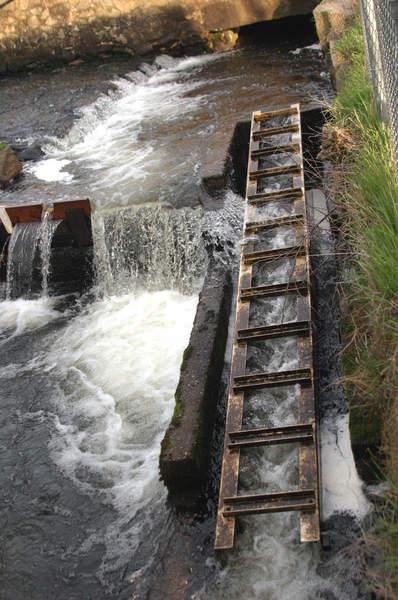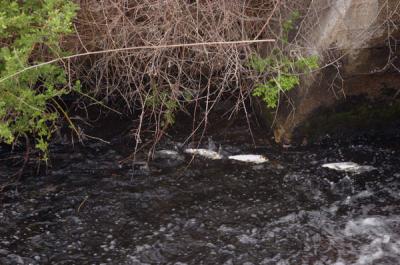Story & video: Running upstream
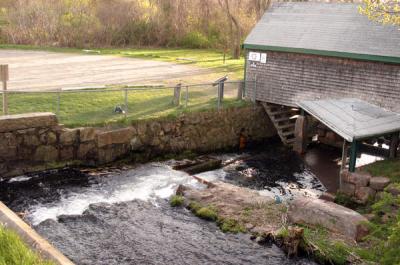

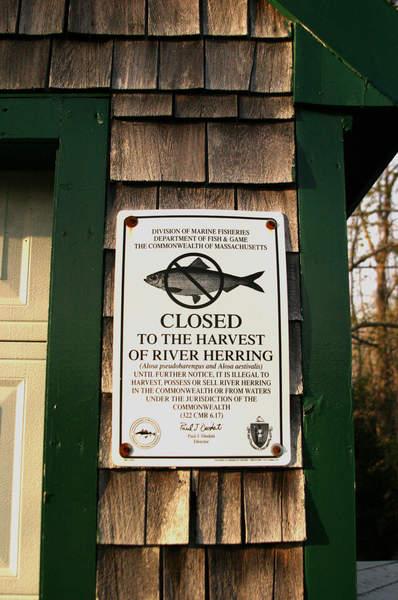
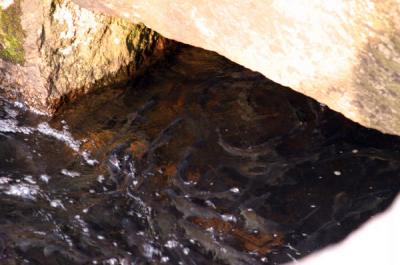

They're on the run!
This week, the herring increased from a trickle to a full-on run in the Agawam River, as the annual migration brought out onlookers and anglers of both the human and non-human species.
"They're stacked like cordwood," said Kevin O'Connell while watching the herring align below the herring ladder at the Elks Club late Saturday afternoon. "It's the thickest I've seen 'em, and I've been coming every day for a month."
The fish are two species of river herring; alewifes and blueback herring. Both are anadromous fish, meaning that they live most of their lives in the ocean but return to streams and ponds to lay their eggs.
Like salmon, herring return to the same stream where they were born to lay their eggs. If a river is obstructed or otherwise altered to prevent the fishes' return, the population will soon die out.
Unlike salmon, however, herring cannot jump out of the water and over waterfalls or other obstacles. They have to swim upstream.
Thus, since Colonial times, humans have installed fish "ladders," a set of walled "steps.". Spillways that can be controlled due to the volume of water, allow the fish to swim up the "stairs," and the pools formed by the steps give the fish an opportunity to rest. Although the design and materials can vary, these structures are generally referred to as weir-pool fishways.
The ladder at the Elks, however, uses a newer design called an Alaskan steeppass. The aluminum structure is more durable than the mostly concrete and wooden fishways, has a steeper slope and thus takes up less space, and creates so much turbulent water that the fish is almost pushed upstream.
Originally designed for remote Alaskan locations, the design is being employed more frequently in an effort to aid herring populations.
The State of Massachusetts outlawed herring harvesting in 2005 after riverine herring populations dropped precipitously in 2000 after an almost-as-dramatic increase during the 1990s.
Officials blame midwater trawlers, fishing vessels that use large nets to scoop up schools of bluefish, tuna and striped bass and inadvertently catch and kill the herring that they are feeding on.
"This [the herring] is food for any number of fish: bass, tuna, mackerel, blues," said Wareham Herring Warden Jack Dixon. "The fishermen spot a big school of fish that are feeding on the herring, and scoop them up. But the minute [the fish] are in the net, they're dead."
Although the count - each river has electronic counters that record the numbers of migrating fish, kind of like an aquatic EZPass - is not available yet, the run looks strong this year. However, Dixon said that it is unlikely that the numbers of migrating herring would rebound enough to allow the harvesting of river herring any time soon.
"Until the Federal or State government put in regulation in near shore waters to prevent incidentally catching [herring], you're not going to see any [harvesting of the migrating fish]," Dixon said.
And although the numbers of fish counted in the Agawam River increased from approximately 30,000 in 2008 to nearly 40,000 in 2009, according to the Coalition for Buzzards Bay, the organization recorded approximately 100,000 fish in 2007.
And Dixon said that the numbers were nowhere near historic highs.
"We used to set aside 30,000 fish from the harvest to give away [to the poor]."
Watch the herring run!



